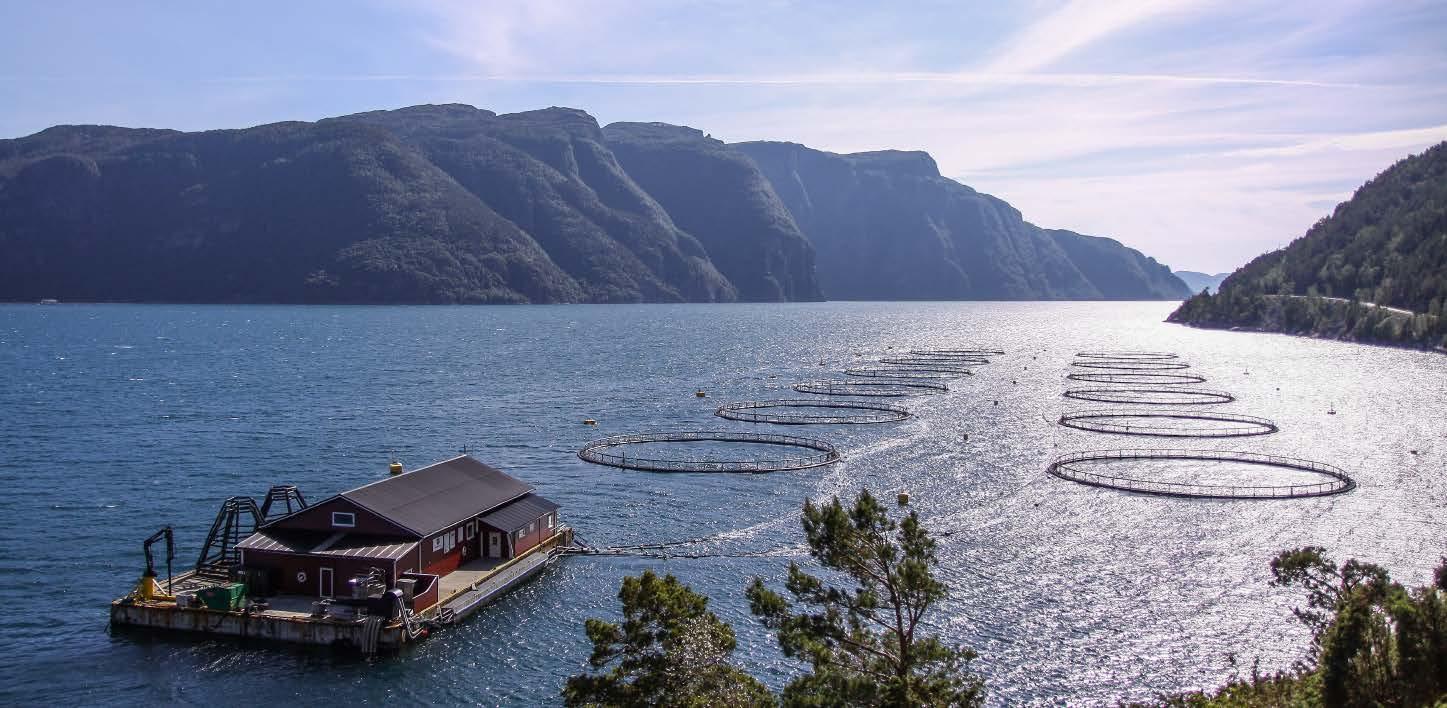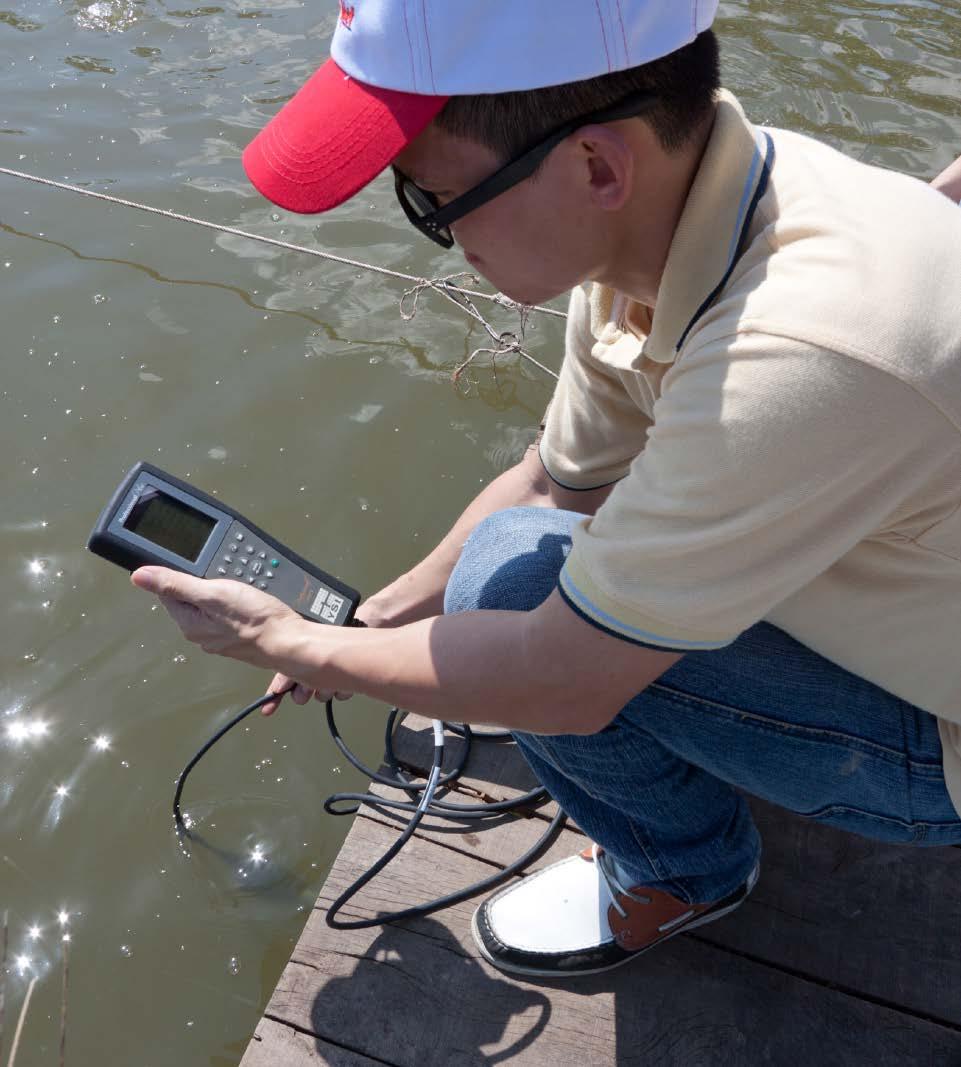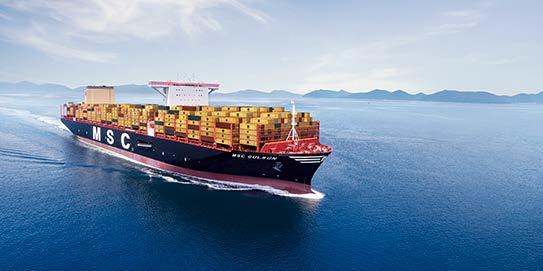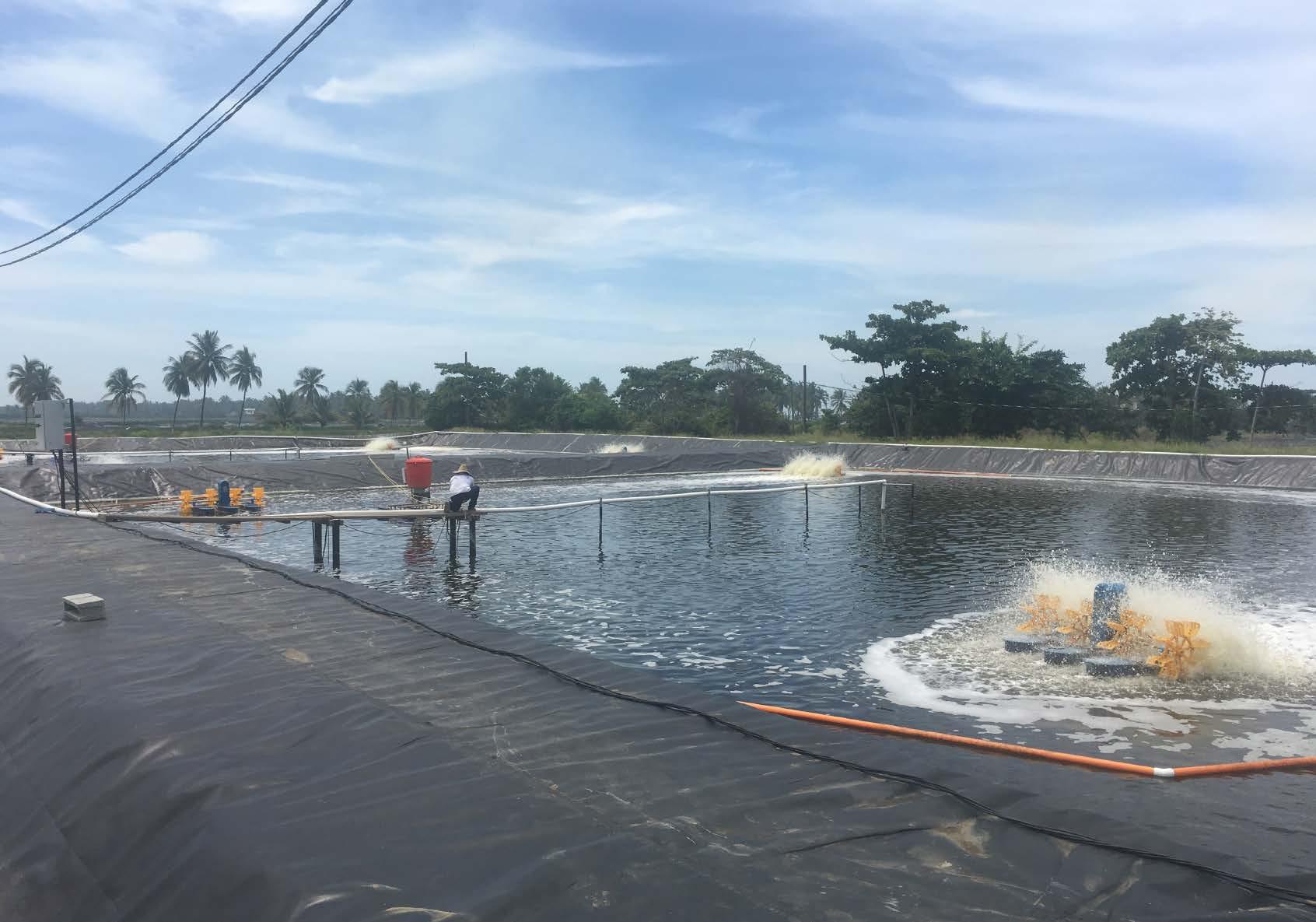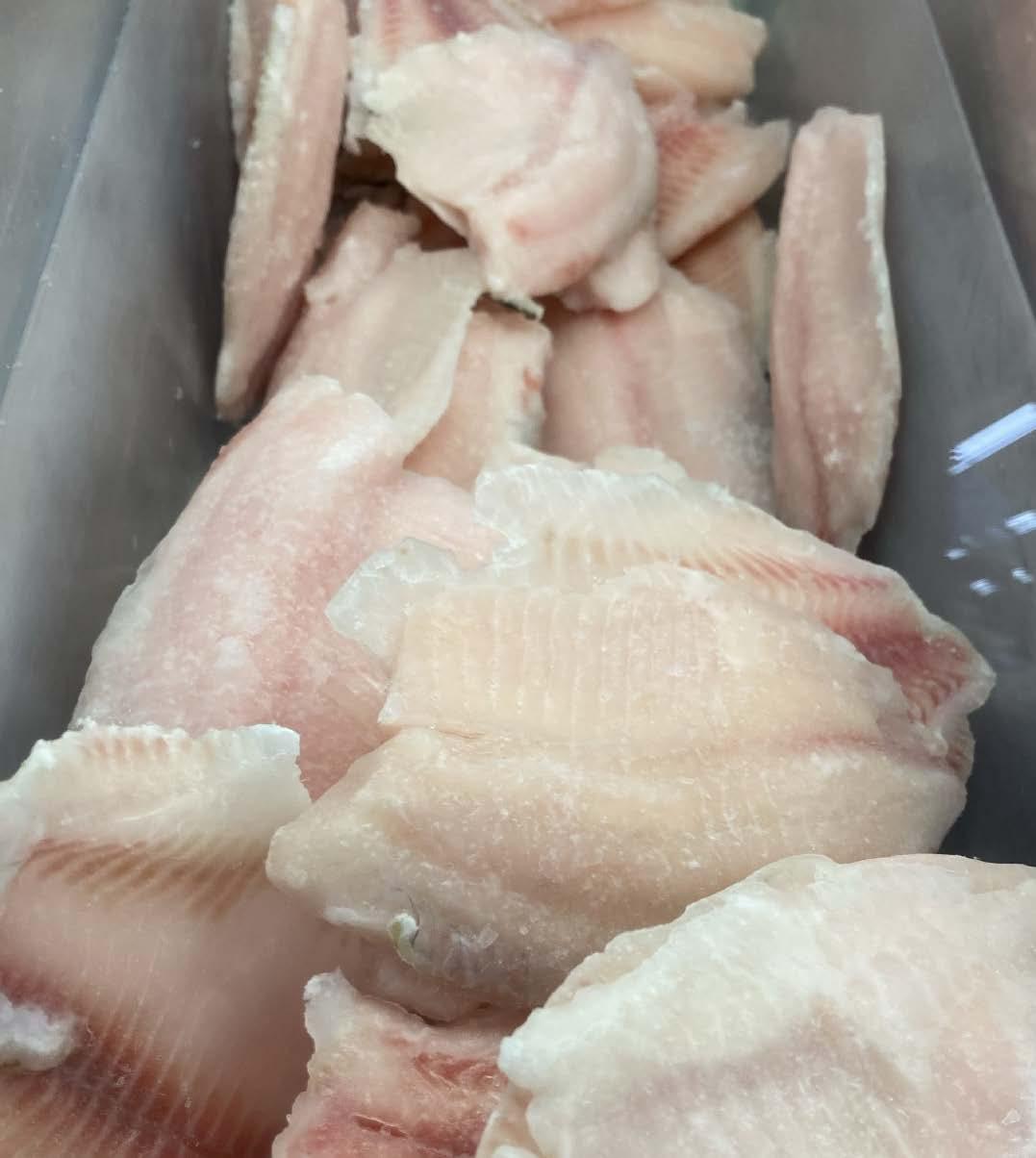
18 minute read
Investing in aquaculture: a good idea or not?
“Caveat emptor”- let the buyer beware
With a 6 to 8% projected annual growth rate into the foreseeable future, aquaculture will offer good investment opportunities. However, just like any other endeavor, there are some very good reasons why what some see as a pot of gold at the end of the rainbow is empty. There are many exciting opportunities in aquaculture globally. Approaching them cautiously and ensuring that somewhere in the evaluation process there are voices that think about the upsides and understand the potential downsides is critical.
By Stephen G. Newman Ph.D. * President and CEO, AquaInTech Inc.
Aquaculture is the farming of animals and plants that require water to be grown in. It is water-based agriculture.
It is an ancient form of agriculture and has a history that stretches far into the past. It is the last major global shift from a hunting (fishing) to a farming paradigm.
It encompasses hundreds of species, including fish species, many crustaceans (shrimp and crabs), other invertebrates (oysters and clams), and aquatic plants (algae).
This sector has grown rapidly for decades and is expected to continue to do so for many years to come.
With a current global population approaching 8 billion people and a predicted increase to more than 10 billion within the next three decades, aquaculture is held by many to be the only way to meet the demand for high-quality sustainable protein to feed the masses.
For much of history, China has been the world’s leading country for the production of protein by aquaculture, at times representing more than 50% of the total global production.

Since adopting capitalism over the last three decades, their burgeoning middle class has driven huge increases in the demand for quality seafood products.
Demand for seafood is increasing globally and can only be met via aquaculture.
The fishery cannot meet the demand, and there are legitimate concerns that even with tight restrictions, many fisheries are in decline.
There are several important things that investors should consider before investing.
Relatively few companies are in the public sector, although this is increasing as inexorable market forces drive consolidation.
Consolidation is inevitable and the more than likely the only way that sustainability can be assured in the long run.
Poverty-driven farming by its very nature, i.e., seriously resource-limited, is not a viable long-term (i.e., sustainable) production paradigm.
It is unfortunate that there have been a number of highly visible problems with publicly traded companies that have created some distrust.

I have been working with aquaculturists for more than 40 years in dozens of countries on many different species.
This industry is one of change, and the changes keep coming. What should you be looking for to make money? Many factors can contribute to success, and these together can maximize your chances of long-term success.
Sustainability is the big catchphrase today.
When and if the US government finalizes organic standards for aquaculture products, we will see a new catchphrase.
The quandary is that organic is a legal definition which makes compliance relatively straightforward.
Sustainability is actually a fairly simple concept, though, as with many other things of this nature, the devil is in the details.
Farmers should be farming using techniques and technologies that minimize environmental impacts that will prevent future farmers from being as, if not more, productive.
Sustainability/ Certification
Not too many years ago, certification of aquaculture operations was nonexistent.
Today, many certification schemes in differing stages of evolution are being touted as paths to sustainability.
These are, for the most part, largely business driven with retailers being sold on various programs by those who have developed the programs or by other NGOs that believe that they should advise retailers what programs actually are sustainable.
Like all other activities, the process of certification has some good elements and some bad elements.
While it is laudable that some degree of cohesiveness has been brought to the myriad of practices that constitute aquaculture, the reality is that in large parts of the world aquaculture is being driven by poverty.
In those areas where this is not the case, and corporate farms exist or are becoming the norm, the wide divergence of practices does not favor one scheme over the other.
Farms will choose the schemes that the retailers tell them to have. The retailers may rely on NGOs with specific biases to assist them in determining what programs are the “best”. This does not allow one to equate certification with sustainability automatically. In fact, when programs focus on non-issues such as the use of fish meal in aquaculture feeds, the use of GMO feed ingredients, etc., they stray away from sustainability and become little more than venues for interest groups to promulgate specific agendas.

Profitability
The underlying reason for any business enterprise to exist is to generate revenue (profit) above and beyond the cost of running the business. For small operations, the profit is the paycheck that the owner/operators take home.
For corporate operations, profits are typically dividends payable to shareholders, or an increase in the value of the stock.
For investors, the best companies are those that generate a consistent profit.
In aquaculture operations, this is not typically the norm.
Since the end product is a commodity, supply-side economics operate.
Sharp deviations in supply and demand impact pricing, and even small changes can result in fluctuating prices.
Production is rarely consistent from cycle to cycle, and survivals, animal quality, and the cost of inputs (specifically feed) must be considered as well.
So typically, there are good and bad years, and the hope is that the good years more than adequately make up for the lean years.

This is part of a cycle and will not persist. The reasons for this consistent lack of profitability are complex and differ from business to business although they typically boil down to a few common issues.
1.Management incompetency
Aquaculture is not as straightforward as terrestrial agriculture.
The immediate production environment (water) adds a large number of variables to the culture process that can complicate matters.
This includes water chemistry, animal health, stress mitigation, animal nutrition, and animal physiology, among others.
Few managers have a handle on all of these.
Production of shrimp (and fish) is a multistage process and starts with broodstock production and continues through the processing plant to the consumer’s hands.
Some believe that they can justify this by arguing that it is survival of the fittest, and others cite these survivals as being normal.
The truth is that a successful hatchery should be routinely getting 80% or higher survivals.
Survival of the fittest has nothing to do with production and is an excuse to cover up poor management.
The ability to manage variables and lessen the risks to animal health determines success, not solely whose diet is being used or how much water you push through your system, etc.
2. Ownership complacency
Owners are not always farmers (except for smaller privately held farms).
They are typically businessmen. While they may understand the nature of business and the need to generate a profit, they typically place a lot of faith in the biologists in charge of their farms and at times do not provide adequate support to ensure that managers do not find themselves in catch 22 situations.
A few years ago, I was asked to audit a farm under construction financed jointly by locals in South America (Surinam), a Canadian company with local interests and a branch of an international bank (South African). There were significant cost overruns in the early stages of construction, and part of what I was asked to do was to determine what was happening and advise the investors.
Management was in place, but it was recognized that a third party might see things differently.
During the course of my operational audit, I noted that the broodstock to be used in the project were being sourced from the wild.
While this is not a preferable practice, the logistics and nature of the project dictated this.
I inquired as to the degree of testing being done on the adults prior to using them as a source of seed for the farm.
I was told that statistical sampling had been done and that they were evidently free of any of the viruses that are typically thought to be potentially problematic.
To the manager, a knowledgeable and experienced individual, this appeared to be adequate. After all, the broodstock were being held in quarantine for a month prior to being spawned.
As an individual who thinks outside of the box, I voiced the concern that the animals needed to be tested individually and not as a group (statistical sampling relies on random sampling of the population at levels that have been determined to provide a 90 to 98% chance of finding a specific pathogen being looked for but only if the testing technology is 100% reliable-which it cannot be and the sample is really “random”).
The cost of this was brought up as an objection until I explained that the cost of not doing it would be much greater if they introduced a virus into their population and wiped the farm out from the start.
The animals were screened individually, and testing showed that they were carrying, albeit at a very low level, a virus that could have easily damaged productivity from the start.
This could have killed the project and resulted in losses of more than 20 million dollars.
Just about the same time, I was made aware of a project in Africa that was being decimated by viral diseases where the staff and support failed to conduct adequate (any?) testing of wild broodstock and basically wiped out a $30 million investment.
One project was stopped before it reached the point of a blowout, and the other caused severe financial damage.
The management team for this latter project dispersed to the wind and many of them are working on projects where their role in the failure has been minimized and even denied.

3. The Science of Aquaculture
Sort of like the person who has a green thumb and who can keep plants alive no matter how much he abuses them contrasted with the person who has a black thumb who will kill crops just by thinking about them.
In reality, much of what goes on is science-based. It is just that we do not always fully understand or appreciate the science involved.
An example is the role of stress in productivity. Dogmatic approaches towards production are all too common and unfortunately, often the norm. Yet, in many ways, failure to question these approaches can result in catastrophes.
For many years managers and owners touted that shrimp could tolerate low levels of oxygen and that even when there were anoxic events (shrimp would be at the surface gasping for air) that the shrimp could handle it.
They justified this from observations and from economics.
Observing that there were no apparent untoward effects on the shrimp in the days following the event meant that it was not a problem.
The cost of additional aeration equipment and the infrastructure required to produce the electricity required to run the equipment all would add to production costs.
When the animals seemed to be OK, why bother?
Many farms who believe that low dissolved oxygen levels are inherent parts of production routinely have survivals that are under 60%, and staff cannot identify the underlying reason for even the death of a single shrimp!
Farms that understand this and that invest in the needed tools to maintain oxygen levels at five parts per million or higher at all times are much more likely to have fewer problems.
Shrimp grow better, feed conversion ratios are lower (less feed per shrimp) and survivals are higher.
All of this equates with higher profits. I have seen farms that thrive, yet the staff do not know the basics.
They know to stock, feed, watch and harvest.
When problems occur, they are usually the farms that have the worst problems. This is a single example. In fact, this is not even the tip of a vast iceberg.
Pseudoscientific practices are common, and farmers are easy prey.
Managers are sold on technologies where their arrogance and ignorance are exploited, and in many countries, their incomes are supplemented by the purveyors of these technologies. So, when there are problems, they are not going to tell the boss that the company that is giving them a kickback is selling them a product that does not do what it claims. They will find someone to blame, and rarely is it actually who is responsible.
4. Disease
By far, the largest impact on productivity is disease. In fact, bacterial problems due to commonly occurring bacteria are a cause of significant losses at all stages of culture.
This is unfortunate as a large number of these deaths are preventable by following a few sample strategies.
Nothing could be clearer regarding this than the current problems with a strain of Vibrio parahaemolyticus that is causing what has been characterized as Early Mortality Syndrome or Acute Hepatopancreatic Necrosis.
This bacterium is wreaking havoc in many production areas.
The problems that one typically hears about though, are the viral diseases.
For fish in SE Asia, iridovirus and viral necrosis are big ones.
For salmon, Infectious Salmon Anemia (ISA), a disease that has been around for a long time is once again killing fish.
For shrimp, there seems to be an endless cycle, and in 2010 infectious myonecrosis virus (IMNV) was killing large numbers of shrimp in Indonesia, and there are patterns of mortality in China and Vietnam that suggest another as of yet uncharacterized virus may be at work.
You can bet that there will be another “new” virus that causes serious problems in the near future.
Cultural practices in many areas are conducive to widespread viral disease outbreaks, and the diseases that are certain to affect stocks in the future are already present, waiting for the opportune time to begin the global march once again.
Disease poses the greatest risk to an aquaculture investment and this is not going to change any time in the near future.
Moving to systems that seek to control as many of the variables as can be cost-effectively controlled will, in some parts of the world, mitigate the risks.
Unfortunately, in some areas, the economics do not make sense, and risky cultural practices will continue.
The good news though, is that using the right tools and a modicum of common sense, the impact of disease can be lessened.
After all, even though diseases may be impacting animals with regularity at all phases of production, the overall trend is for production to increase, so things must be working at some level.
5. Harmful toxins
This includes toxins from fungi (mycotoxins) that might end up in feed.
There are many species that produce potent toxins that are present as normal inhabitants in aquatic ecosystems.
While many have been characterized, there are many more that have not. These are not routinely screened for.
A single event that is wide publicized will do an untold amount of damage to the industry. The very nature of shrimp and fishpond-based production systems is conducive to the growth of many strains that produce toxins.
Failing to take this into account, which is almost universal at this time, is the Achilles heel of the industry. The risks are the greatest in traditional production systems that totally ignore the science of aquaculture.
Often times production systems are consistent with the presence of these toxins, and there is little doubt that not only is there a huge direct effect on the farmed animals but a substantial risk to consumers in systems that are properly managed and monitored.
Summary
Many things can and do affect production that proper management can mitigate. These include failure to check on managers track records, a universal mindset that blames others for problems, a failure to understand that ignoring the science of aquaculture is not consistent with true sustainability, the intimate connection of stress and disease, and a total blind eye to the proliferation of strains (of algae and bacteria) in production systems that produce a variety of potent toxins.
Over the years, I have been asked by investors about what the steps are that they should be taking to ensure that their investment is a wise one. They want to back people who will make their investment worthwhile and increase in value for their clients. I tell them to pay attention to the basics outlined above and make sure that the people that they are investing in understand the importance and limitations.
This should be someone who understands the risks and is honest enough to not fear the at times negative impressions that can come into play when the truth is put forth.
Take the time to have a cold hard look at what is being done. You get what you pay for. Taking shortcuts leads to problems. The business plan tells one side of the story. Avoid academics with little real-world experience (I am not saying that this is typical of all academics) and avoid yes men who will tell you what they think you want to hear.
So, I would encourage you to consider investing in aquaculture projects that make sense. Look for projects that have the elements of success and that have realistic business plans that clearly outline the risks.
Install your own representatives into the process to ensure that you have the assurances that you need to be aware of problems as they occur but also to work with management to come up with productive and economically viable solutions.
Be proactive about this and do not rely solely on management representations. You have little to lose from taking this approach, and in the end, stacking the deck in your favor will greatly increase the chances of success while lessening the potential of failures.
It is rare that a project, regardless of whether it is an existing operation, one in various stages of development, or even still in the early planning stages, does not have some aspects to it that can confound the process to varying degrees.

Stephen G. Newman has a bachelor’s degree from the University of Maryland in Conservation and Resource Management (ecology) and a Ph.D. from the University of Miami, in Marine Microbiology. He has over 40 years of experience working within a range of topics and approaches on aquaculture such as water quality, animal health, biosecurity with special focus on shrimp and salmonids. He founded Aquaintech in 1996 and continues to be CEO of this company to the present day. It is heavily focused on providing consulting services around the world on microbial technologies and biosecurity issues. sgnewm@aqua-in-tech.com www.aqua-in-tech.com www.bioremediationaquaculture.com www.sustainablegreenaquaculture.com

